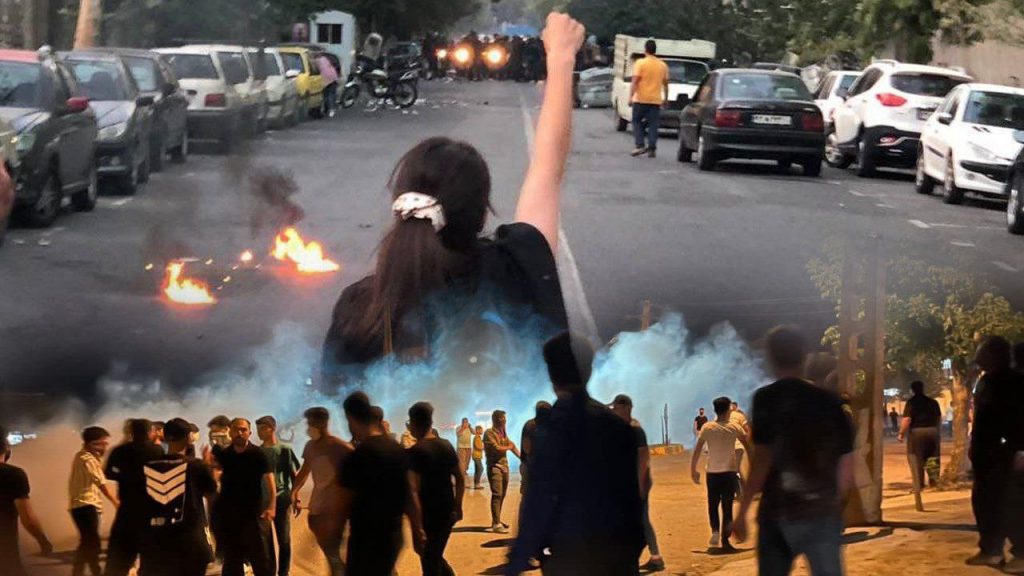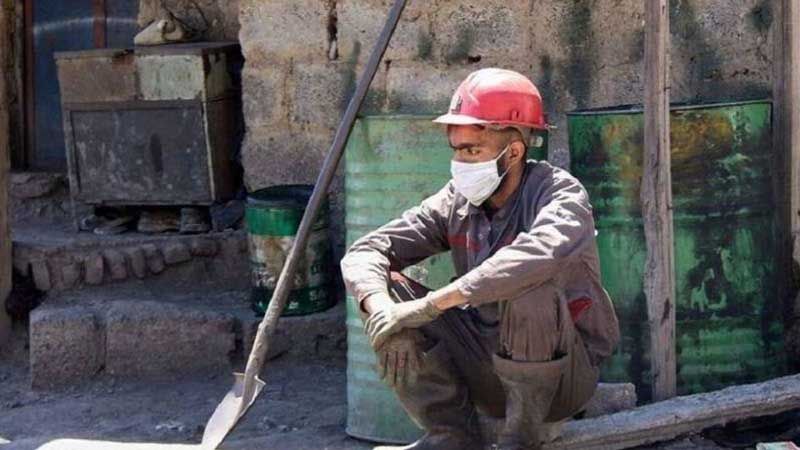
The Islamic Republic, born as an imperfect regime with the help of imperialists, emerged to drown the people’s revolution for freedom in the blood of 1357 (Iranian calendar). This regime carried out this task through severe repression, tyranny, and fascist massacres. However, it faced its own struggles, protests, and resistance, which gradually expanded and deepened. Today, on the twelfth of Farvardin (April 1st), the anniversary of the deceptive spectacle of the Islamic Republic’s referendum, serves as a reminder of a summary of these struggles, showing that during its 45-year rule, this regime has not faced a silent and submissive society.
The first assault of the new regime on the achievements of the revolution occurred on December 6, 1978. On this day, Kayhan newspaper quoted Khomeini as saying that women should go to ministries with Islamic hijab. The following day, which was March 8, International Women’s Day, large demonstrations began in cities such as Tehran, Isfahan, Sanandaj, Bandar Abbas, Kermanshah, and Urmia with slogans such as “Death to tyranny,” “Neither veil nor submission, freedom and equality,” and similar ones, leading to a temporary and apparent retreat of the newly empowered regime.
The second major campaign against the Islamic government took place in Isfahan in Farvardin 1358 (March-April 1979) by unemployed workers. In the early months of the Islamic regime’s rise to power, about two and a half million Iranians, or 21% of the workforce at that time, were unemployed. These workers initiated the unemployed movement with the slogan ‘Work or unemployment insurance.’ This movement began to organize itself in various cities, including Isfahan. On 25 Farvardin 1358 (April 14, 1979), unemployed workers, under the leadership of their newly formed organization called the ‘Union of Unemployed Workers of Isfahan and Suburbs,’ held demonstrations. Despite suppression by the new capitalist regime’s guardians, the protests of the unemployed continued in the following days. During one of these demonstrations, the armed forces of the Islamic regime fired at more than ten thousand protesters, resulting in the death and injury of dozens of people and the death of the militant worker Naser Tavakolian.
During this period, the resistance movement of the people of Kurdistan against the Islamic Republic also emerged, and Kurdistan did not succumb to the burden of the Islamic government, a resistance that has continued in various forms to this day. In the same year, we witnessed the struggles of the rights-seeking people of Khuzestan and the farmers of Turkmen Sahra, who did not allow their lands to be returned to former landlords. However, the eight-year Iran-Iraq war came to the aid of Khomeini and the Islamic regime. They called this war ‘blessed’ to suppress their domestic opponents under its banner and to provide the prerequisites for the complete defeat of the revolution and the consolidation of the Islamic government.
The years of the 1980s witnessed the brutal slaughter of revolutionary and leftist activists during the war with Iraq, and thousands were massacred in prisons. But with the end of the war, the struggle against the Islamic Republic was once again resumed.
The uprisings of the marginalized in the city of Mashhad in Khordad 1371 were met with brutal suppression. In Mordad 1373, the people of Qazvin rose up, and in the same year, there were protests in Islamshahr against inflation. In Tir 1376, student protests spilled onto the streets of Tehran and lasted for several days, turning central parts of the city into battlegrounds between the protesters and the regime. The mass protests of 1388, known as the “Green Movement,” which erupted in response to widespread electoral fraud, the 1396 uprising against corruption and inflation that began in Mashhad and spread to over 100 cities in Iran, and the November 98 uprising against the rise in gasoline prices, which in fact was against the Islamic Republic as a whole, spread to more than 150 cities in Iran, and resulted in the loss of over 1,500 lives. Alongside these uprisings, we have witnessed the continuation of struggles by workers, truck drivers, retirees, environmentalists, and against mandatory veiling. For example, only in the year 1402, there have been over 2,200 strikes and labor protests. Ultimately, today, we are in the midst of the continued revolution that began in Shahrivar 1401 and continues to this day in various arenas. This year’s magnificent Nowruz ceremonies were yet another aspect of this ongoing protest and resistance. There is no doubt that these struggles will ultimately lead to the downfall of a regime that has brought nothing but corruption, theft, inflation, unemployment, intensified poverty, homelessness, imprisonment, torture, execution, and inequality for hardworking people and comfort, luxury, and wealth for capital owners.
On the day of the establishment of the regime of crime, oppression, and destruction, it is fitting to honor the memory of the communists, revolutionaries, pioneers, women, and men who sacrificed their lives in the fight against this inhuman monster and for the realization of the true ideals of the Iranian Revolution, whether on the battlefield or in prisons. Their inspiration motivates us today more than ever to engage relentlessly, strategically, organized, and continuously against the Islamic regime and the capitalist system.

